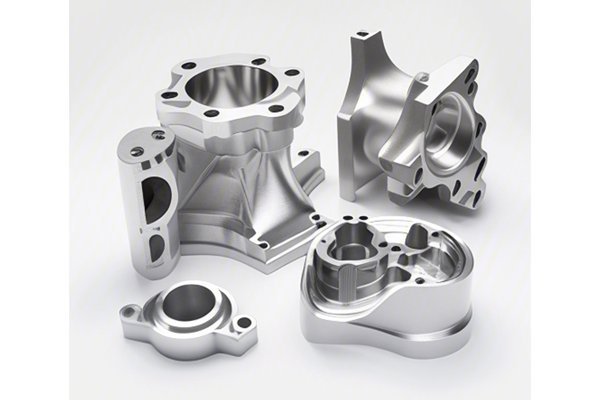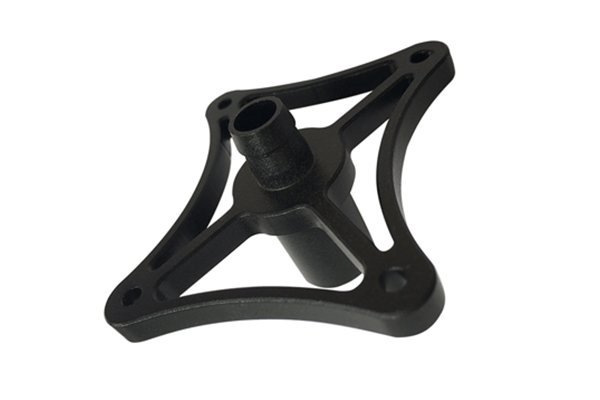Did you know that the manufacturing industry is responsible for approximately 20% of the world’s greenhouse gas emissions? With the increasing urgency to combat climate change, industries worldwide are seeking innovative methods to reduce their environmental footprint. Among these innovations is the rising prominence of Computer Numerical Control (CNC) processing, which not only enhances precision and efficiency but also supports the development and application of environmentally friendly materials. But how exactly does CNC processing contribute to sustainability? This blog post will explore the key aspects of CNC technology that facilitate environmentally friendly manufacturing practices.
1.1 What Are Eco-Friendly Materials?
Eco-friendly materials are defined as substances that have a reduced impact on the environment when produced, used, and disposed of. These materials can range from bio-based composites to recycled metals and plastics, all aiming to minimize waste and energy use while optimizing performance.
1.2 Why Are Eco-Friendly Materials Important?
The importance of eco-friendly materials lies in their ability to reduce pollution, conserve natural resources, and decrease the overall carbon footprint. As consumers become more environmentally conscious, manufacturers are increasingly pressured to adopt these sustainable materials as a part of their production processes.
CNC processing embodies a myriad of features that make it an ideal technology for implementing eco-friendly materials in various applications. Below, we will explore these features in detail.
2.1 Precision Engineering
One of the most significant advantages of CNC machining is its incredible precision. Traditional machining methods often produce excess waste when cutting and shaping materials. CNC machines, however, utilize advanced digital controls to execute exactly planned cutting paths, which results in less scrap material.
Case Study: Reducing Waste with CNC
For example, a leading company in the aerospace sector implemented CNC processing for their aluminum components. By employing CNC technology, they reduced material waste by 25%, as the machines were able to utilize leftover material more efficiently compared to conventional methods.
2.2 Recycled Materials Compatibility
CNC machines are highly versatile and can easily work with various materials, including recycled products. For instance, CNC technology can be used to manufacture parts from recycled plastics or metals, further promoting the circular economy by reducing the demand for virgin materials.
2.3 Energy Efficiency
CNC machining not only optimizes material usage but also enhances energy efficiency. CNC machines are designed to operate with minimal power consumption while delivering superior performance. This efficiency helps manufacturers reduce their energy costs and overall environmental impact.
Statistics: Energy Savings
According to recent studies, transitioning to CNC technology can lead to a 15-20% reduction in energy consumption during the machining process. By making the switch, manufacturers can significantly lower their carbon emissions.
2.4 Automation in Production
Automation is one of the key features of modern CNC systems. Integrated software and robotic arms can optimize machining processes, ensuring that only necessary resources are used and unnecessary steps are eliminated. This results in a more streamlined production process, minimizing waste and promoting sustainability.
Additionally, recent innovations in CNC technology have opened new avenues for utilizing eco-friendly materials.
3.1 Advanced Software
The advent of advanced CAM (Computer-Aided Manufacturing) software has allowed manufacturers better to plan their projects while optimizing the usage of eco-friendly materials. These sophisticated programs can identify the best cutting paths and machining strategies, reducing material waste and increasing efficiency.
3.2 Multi-Material Processing
CNC machines can now work with multiple types of materials simultaneously. This has significant implications for environmental sustainability, as it allows manufacturers to blend sustainable materials with traditional ones without sacrificing performance or quality.

3.3 Innovations in Tooling
Advancements in tooling technology have begun to make it easier to process eco-friendly materials. For example, specialized tools designed for working with bio-composites are created to create a seamless manufacturing process while ensuring high-quality finish for the final product.
While CNC technology offers numerous advantages, some challenges must be addressed when integrating eco-friendly materials.
4.1 Material Limitations
Not all eco-friendly materials are suitable for CNC processing. For instance, some bioplastics may require specialized tooling or conditions to avoid degradation during machining.
4.2 Initial Investment
Switching to CNC technology and sourcing eco-friendly materials can represent an initial financial burden. However, the long-term benefits regarding reduced waste, energy consumption, and regulatory compliance often outweigh these upfront costs.
Several organizations have implemented CNC processing with eco-friendly practices that warrant discussion.
5.1 Aerospace Manufacturer
An aerospace manufacturer shifting to CNC processing and utilizing recycled aluminum achieved a notable reduction in their overall environmental footprint. By using recycled materials, they reduced carbon emissions associated with material sourcing by an estimated 30%.
5.2 Automotive Industry
In the automotive sector, companies employing CNC technologies to fabricate biocomposite parts have made strides in reducing the use of conventional plastics. These moves not only contribute to sustainability but also improve the durability and performance of the final products.
The direction of CNC processing appears promising for sustainable development.
6.1 AI Integration
The integration of artificial intelligence (AI) into CNC processing systems promises to further optimize the use of resources, improve predictions on material wear, and enhance the overall efficiency of machining operations.
6.2 Focus on Renewable Resources
A growing number of manufacturers are beginning to explore renewable materials, such as plant-based composites or biodegradable plastics, paving the way toward even greater sustainability in CNC applications.
6.3 Policy and Regulation
As governments around the world increasingly implement stringent environmental regulations, manufacturers will likely turn to CNC technology as a means of compliance while maintaining production efficiency.
In summary, CNC processing stands at the forefront of sustainable manufacturing, presenting a myriad of advantages that support the development and application of environmentally friendly materials. From precision machining that reduces waste to energy-efficient operations and the ability to work with recycled materials, CNC technology is not only a powerful tool for manufacturers but also a crucial ally in the global fight against climate change.
This transformation towards sustainability in manufacturing is a significant step for industries aiming to minimize their ecological footprint. As we move forward, the adoption of CNC technology and sustainable materials will likely play a pivotal role in achieving more responsible production practices. Readers should consider how such advancements can shape both the future of manufacturing and the health of our planet. Engaging with processes that prioritize eco-friendly materials isn’t just beneficial – it’s essential for the industries we rely on every day.






